The Salone del Mobile has ended and many articles have already been published. Each article highlights the novelties and provides an opinion on the evolution and trend of products and of the Salone itself. However, I tried to look at it from a slightly different perspective, something beyond the “commercial trends”.
During my walk around the Salone del mobile and Fuori Salone, I tried to have a very hands-on approach to what I was looking for without getting distracted too much by the inspirational installations. Although beautiful, they do communicate where we are going but do they actually solve our problem?
Our real problem is finding products and companies that are truly natural, respectful of the planet and people; that use healthy materials and are good for biophilic design. So I tried not to stop at one collection but looked into the entirety of what the company of the stand I was visiting was offering, and how the organization is set up.
Here are 5 that I have chosen for today from the Salone del Mobile Milan 2023:
1.House of Lyria – Prato Florence
House of Lyria is based in the textile district of Prato near Florence. Prato is an important textile district in Italy and worldwide. House of Lyria produces organic fabrics for home textiles and fashion and presented a vast range at this years’ Salone del Mobile.
Their products are certified GOTs and some of them use recycled material. They are making a clear effort in implementing 4sustainability Chemical management protocol for eliminating toxic and harmful substances in production through ZDHC MRSL; This is an ongoing journey and commitment.
The inspiration from nature and attachment to local heritage make many of their collections good for a nature-centered environment.
Natural fibers such as wool, linen, and cotton and unusual combinations and unconventional looming techniques are used to create textures and to give the fabric a longer life. Colors are natural and muted. they are created using organic sources such as coffee, and tea ashes. Instead of chemical dyes. Lyria’s pallet is inspired by the forest using elements such as bark , leaves, and musk.
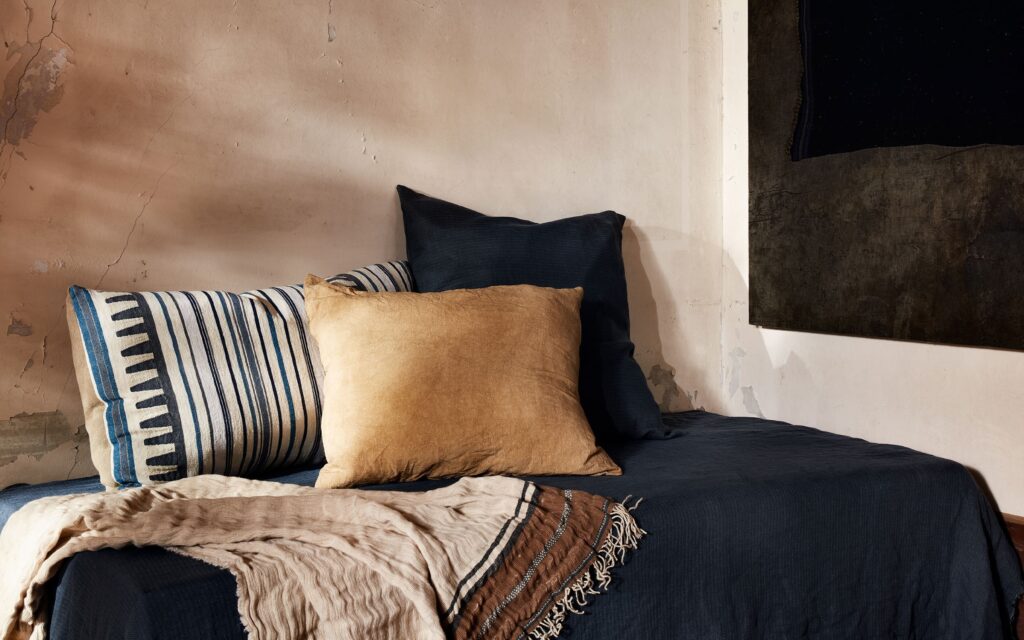
credit: House of Lyria

credit: House of Lyria
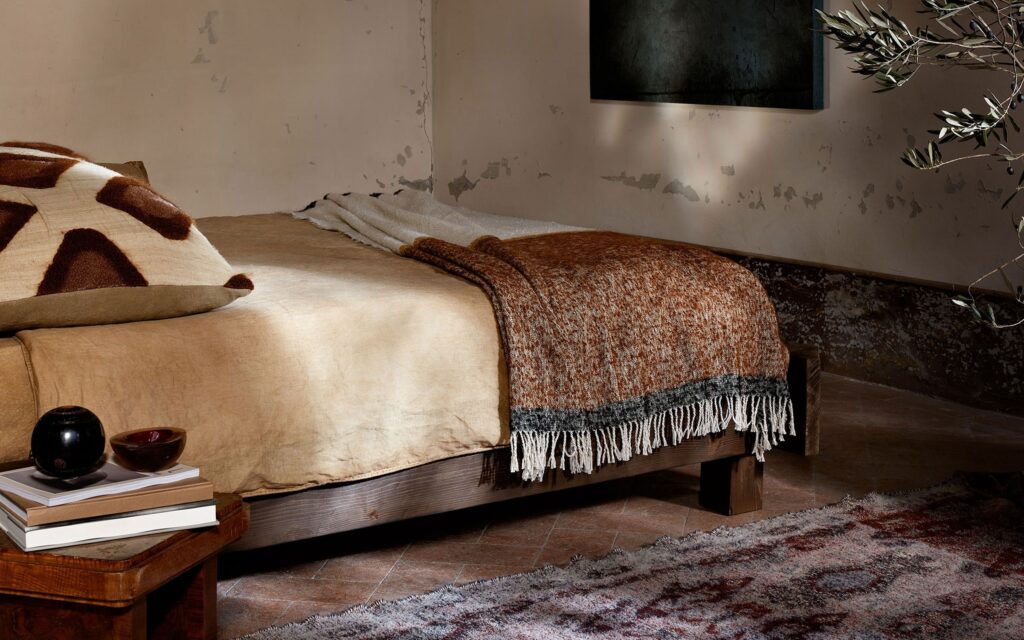
credit: House of Lyria
https://www.thehouseoflyria.com/en/
2. Les Eaux Primordiales
Les Eaux Primordiales was not actually at the Salone del mobile but at the new location Alcove of the Fuori salone. For this innovative space, Les Eaux Primordiales created an olfactory and sensory installation in collaboration with DWA Design Studio that invites visitors to dive into their sensory world. I was particularly attracted to this because of its strong sensory experience that recalls many of the fragrances found in the French woods where the company is based. It really demonstrates how important the olfactory sense is to really “live” the space. An protocol of Biophilic Design not to be underestimated.
These fragrances are used in their home products & candles.
3. Cengiz Hartmann
I’d also like to introduce you to an artist named Cengiz Hartmann. At Alcove, he presented unique artworks that he created from a tree found on the border of his land that had fallen after a particularly strong storm (one of the consequences of climate change in Germany). All of his works center around bringing back to the essence the spirit of natural objects without killing their poetry.
I believe that with these wood artworks, he has managed to do just that. Having a signature artwork in a space is very important and can completely change the way the space is perceived, especially when the artwork/sculpture is made from natural materials and has such a strong story behind it.
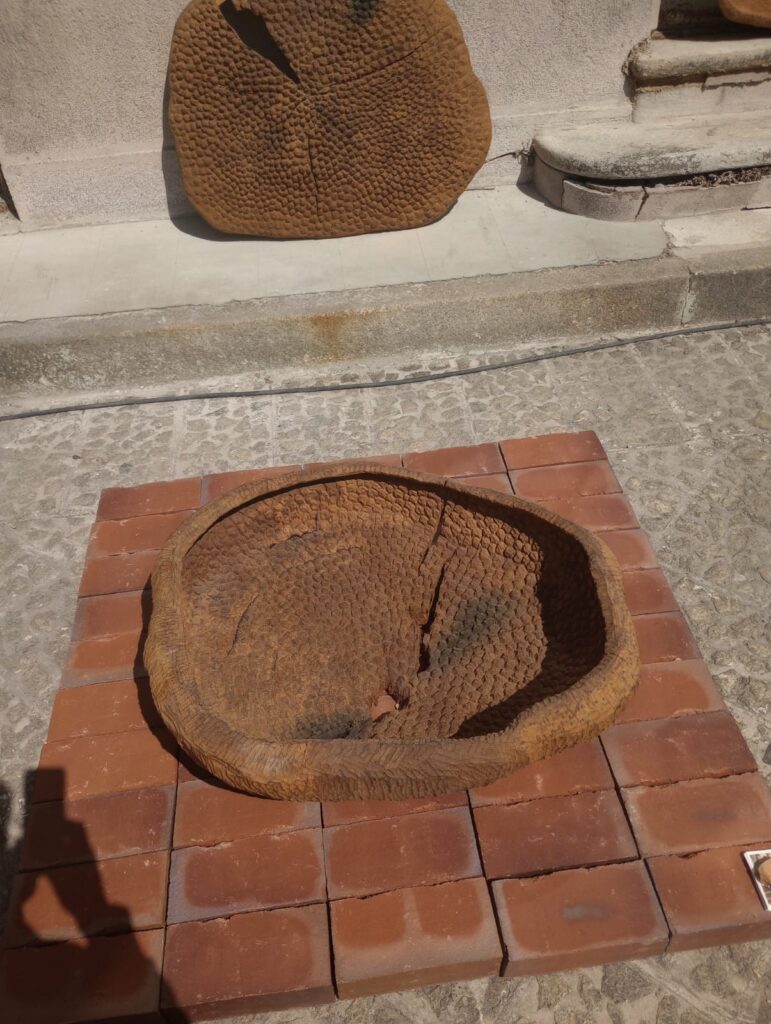
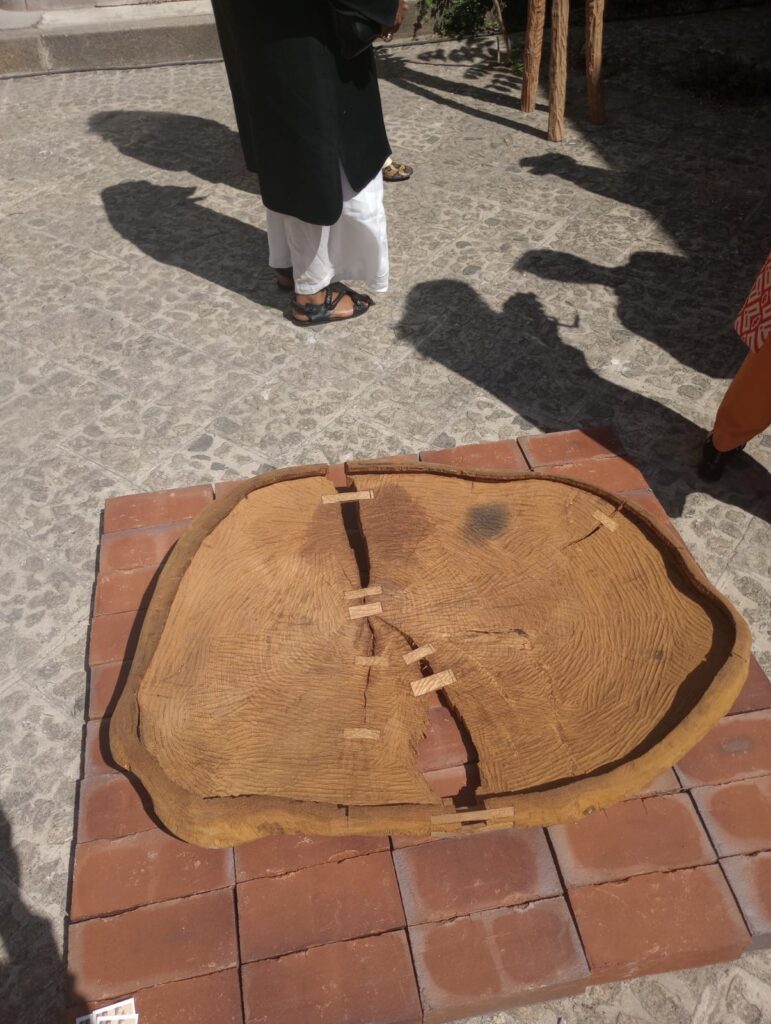
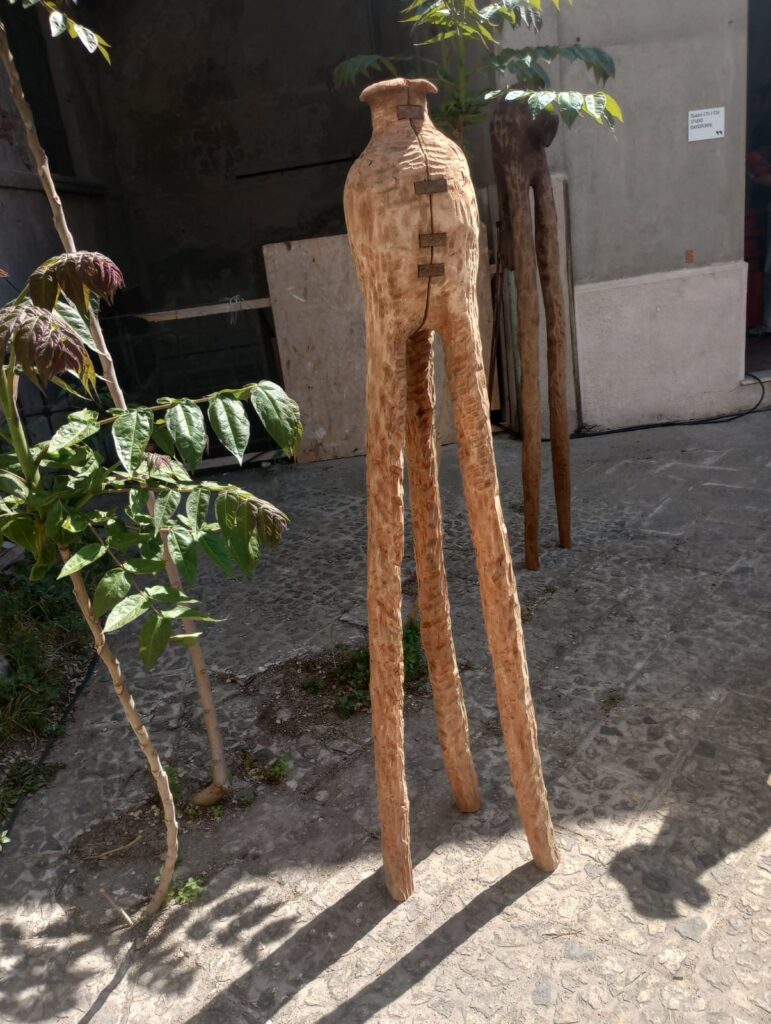
You can check out @cengizhartmann on Instagram
4. Tatami ReFAB project
I found this fascinating. I made a point of visiting Salone Satellite, which is a section of the Salone del mobile reserved to young designers, on my first day because I know it is situated at the very end of the fairground layout, and usually one reaches it at the end of a few long and tiring days when you are not in your ‘peak state’ of attention after so much information overload.
I’m glad I did because the Tatami Refab Project really captured my attention. Firstly, with such a strong culture in Japan, it is important to reinvent while respecting the past. This concept of connection to place and cultural heritage is very important.”
The Tatami Refab Project is a project that aims to reintroduce tatami into modern life by using 3D printing technology. The project showcases furniture designed using a material made of recycled tatami and biodegradable plastic, with the goal of showcasing the beauty of tatami to the next generation. The project was created by Honoka Japan, a Japanese design collective that won this year’s SaloneSatelite Award
5. Vibia Lighting company
This year during the salone del mobile there was also Euroluce, Of the many light stands present, I was drawn to Vibia. Here’s why: it is one of the few lighting companies that really puts people at the center of their design. They tend to have a holistic approach to their projects, taking into consideration materiality, composition, and the use of space.
They use low voltage LED and fittings that guarantee efficient energy consumption and control systems that are dimmable. They also offer replaceability of the entire range and the single components so as not to just toss out and buy more.
Vibia’s beautiful aesthetics are inspired by nature. One of my favorites from their range is KNIT designed by Meike Harde. This is a range that radiates warmth, maybe thanks to the knitted textile sleeve. It exudes familiarity, intimacy, and comfort.
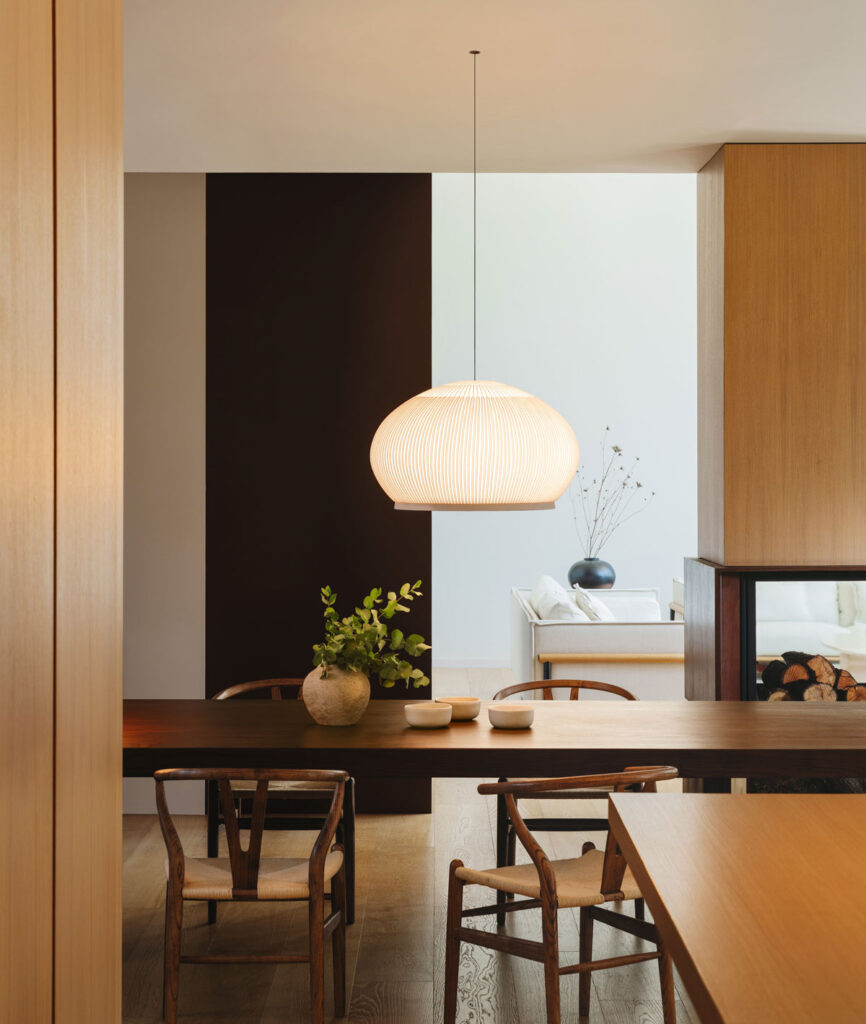
credit: Vibia
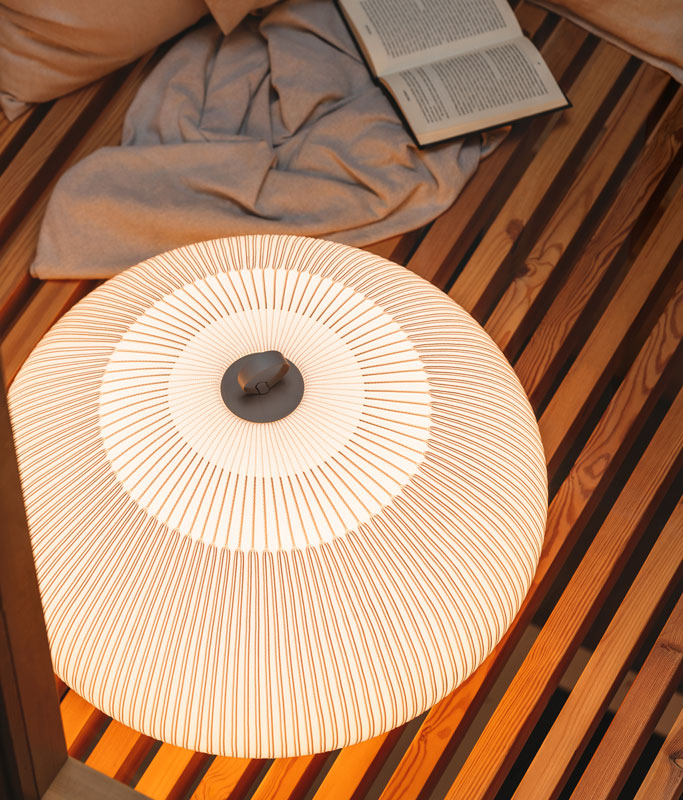
credit: Vibia
www.vibia.com
If you visited the Salone del mobile in Milan or even Highpoint market in NY, I would love to know what you found interesting and maybe share together our discoveries that can enhance the creation of spaces that are truly centred around creating well-being for the occupants through Biophilic design.
We will delve deeper in to these and many more that i have collected at the Salone del Mobile on our live meetings of Materials Monday, reach out to register for your place or to find out more join our free community The Biophilic hub HERE.
You may also be interested in reading our article “Biomimicry – nature is our powerful teacher.”
Or If you would like to learn more about Biophilic design and healthy materials and how you can integrate these into your life and business; why not take a look at our learning center.
Our spring session of workshops are starting soon; don’t miss out.